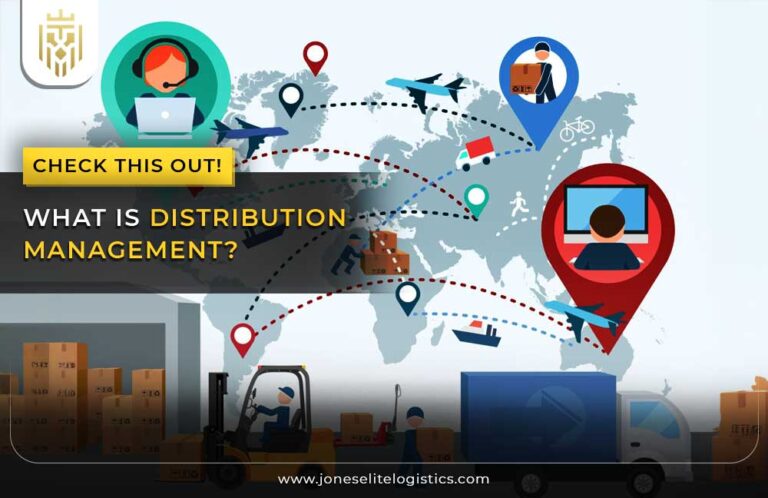What is the Role of Distribution in Supply Chain?
The role of distribution in supply chain ensures seamless movement and storage of goods from manufacturers to consumers through wholesalers and retailers. Distribution involves warehousing, inventory management, and packaging, all aimed at achieving maximum cost-effectiveness of the supply chain management process. An efficient distribution supply chain strategy facilitates customer satisfaction through timely product availability.
How Distribution Impacts a Supply Chain?
Distribution impacts supply chain management by optimising cost, efficiency, and inventory flow. Well-executed distribution strategies contribute toward timely delivery, cost minimization, and customer satisfaction, each of which strengthens the performance of the distribution part of the supply chain and maintains a competitive position in the marketplace.

Cost Optimization:
Optimizing supply chain distribution reduces costs by managing transportation, warehousing, and delivery processes efficiently. By considering effective distribution strategies, firms could bring down their costs by improving inventory management and resolving logistics issues. A well-designed distribution supply chain ensures minimum waste, maximum profit, and effective allocation of resources.
Supply Chain Efficiency:
A well-distributed supply chain ensures smooth product movement while saving on costs and downtime. Such a strategic orientation lends itself to the improvement of inventory management and ultimately leads to a competitive edge in the marketplace. Industries can exploit resource commitments in supply chain operations across an efficient distribution network to consolidate their market positioning and offer superior customer service.
Demand Forecasting:
Precision in matching supply chain distribution to demand allows firms to optimize stock levels and resources. A well-designed distribution network eliminates redundancies in delivering products to customers within the supply chain and helps minimize excess inventory and stockouts. A good distribution strategy helps businesses respond quickly to market demand movements from production and logistics.
Factors that Affect Supply Chain Distribution:
Customer demand, warehouse management, third-party logistics, and natural disasters and disruptions impact the distribution supply chain efficiency. Disruption and natural disasters tend to affect operations greatly. Therefore resiliency in the distribution strategy is key in ensuring seamless supply chain distribution.

Customer Demand:
Customer demand is a driving force in distribution supply chain decisions, influencing inventory levels and production volume. Businesses should analyse market conditions and adopt effective distribution strategies to save themselves from stock imbalance. An optimised supply chain distribution framework ensures that goods are available when needed and at the desired location.
Warehouse Management:
Warehouse management, when handled well, enhances supply chain management through enhanced organization and retrieval of products. Smart distribution strategies applied in warehouse operations help reduce operational costs and improve the responsiveness of the supply chain. Properly handled stock within a distribution network in the supply chain ensures faster shipping and reduced inventory turnover.
Third Party Logistics:
Accessibility to various third-party logistics providers enhances the supply chain distribution through warehousing, transportation, and inventory management. Their specialisation enables firms to optimize their distribution activities as they focus on their core business operations. By partnering with 3PLs, firms improve effectiveness, reduce costs, and strengthen their distribution network in supply chain management.
Natural Disasters and Disruptions:
Natural calamities can hamper the operations of distribution supply chains, causing delays in transport and inventory shortage. Therefore, resilience planning in distribution ensures the possibility of disruption as companies strategize in maintaining continuity in business. A good supply chain distribution plan would guarantee a company future quick recovery and limit financial losses.
How does Supply Chain Distribution Work?
Warehousing, transportation coordination, and inventory control make up distribution in supply chain management. Products will likely move from the manufacturers to the end consumers efficiently when a structured distribution network in the supply chain is in place. Well-planned distribution strategies boost operational efficiency and customer satisfaction.
Four Channels of Distribution:
Distribution network in supply chain includes direct sales, wholesale, brokerage activity, and dual distribution. Each channel enables businesses to optimize their supply chain management by adopting the most suitable and efficient approach for addressing consumers while controlling costs.

Direct Sales:
Direct sales mean that no intermediaries are incorporated in the distribution of the supply chain, and companies formulate the structure of their pricing and relationship with the customers. Online platforms and direct sales help businesses gain more consumers through direct distribution strategies. In this way, a company could be said to enhance its profitability in a distribution supply chain because of a stronger brand and thus consumer attention.
Wholesale:
Wholesale distribution practices bridge into the distribution network in supply chain, i.e., bulk selling of products to retailers right from the manufacturers. Distribution strategies help businesses in inventory managing that help reduce costs. Efficient supply chain distribution models ensure that products flow and are reachable in the market.
Brokerage:
Brokerage provides a connection through intermediaries between the buyers and sellers in the distribution supply chain and simultaneously provides different channels for multiple service levels. Businesses, through the use of digital platforms or expert intermediaries, boost efficiency in transactions within their distribution strategies. A strong distribution network in supply chain ensures seamless product movement and cost-effectiveness.
Dual Distribution:
Dual distribution describes the combination of direct and indirect methods for supply chain distribution, which allows the broadest range of market coverage. Businesses also practice dual distribution in their strategies, where they use hybrid distribution to let access and customer convenience increase. This makes the supply chain distribution model flexible, making the brand competitive and users more reachable.
FAQs
1.What is the role of distribution in the supply chain?
The role of distribution in supply chain ensures seamless movement and storage of goods from manufacturers to consumers through wholesalers and retailers. An efficient distribution supply chain strategy facilitates customer satisfaction through timely product availability.
2.What are the factors that affect supply chain distribution?
Customer demand, warehouse inventory management, third-party logistics, and natural disasters and disruptions impact the distribution supply chain efficiency. Disruption and natural disasters tend to affect operations greatly. Therefore resiliency in the distribution strategy is key in ensuring seamless supply chain distribution.
3.How does Supply Chain Distribution Work?
Supply chain distribution involves moving goods from manufacturers to consumers through storage, inventory control, and logistics. An efficient and cost-effective distribution network in the supply chain improves supply chain management by ensuring timely deliveries.
4.How distribution impacts a supply chain?
Distribution impacts supply chain management by optimising cost, efficiency, and inventory flow. Well-executed distribution strategies contribute toward timely delivery, cost minimization, and customer satisfaction, each of which strengthens the performance of the distribution part of the supply chain and maintains a competitive position in the marketplace.









